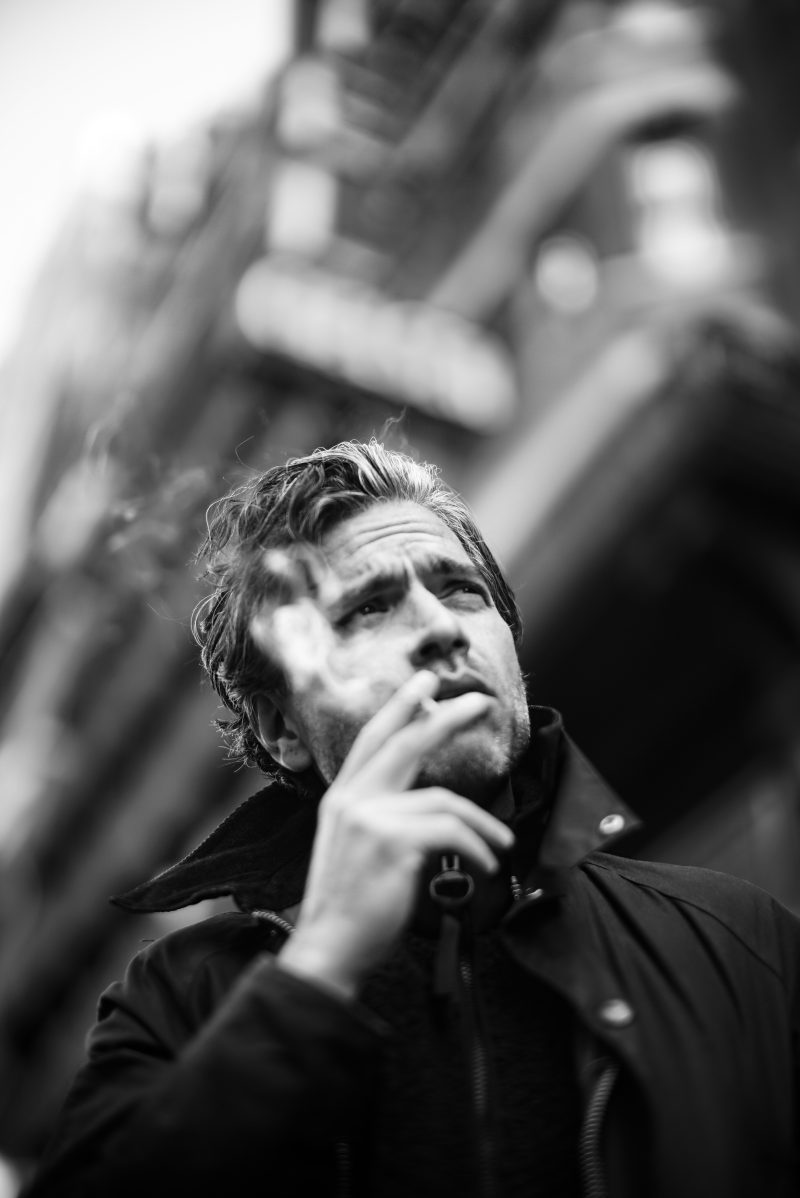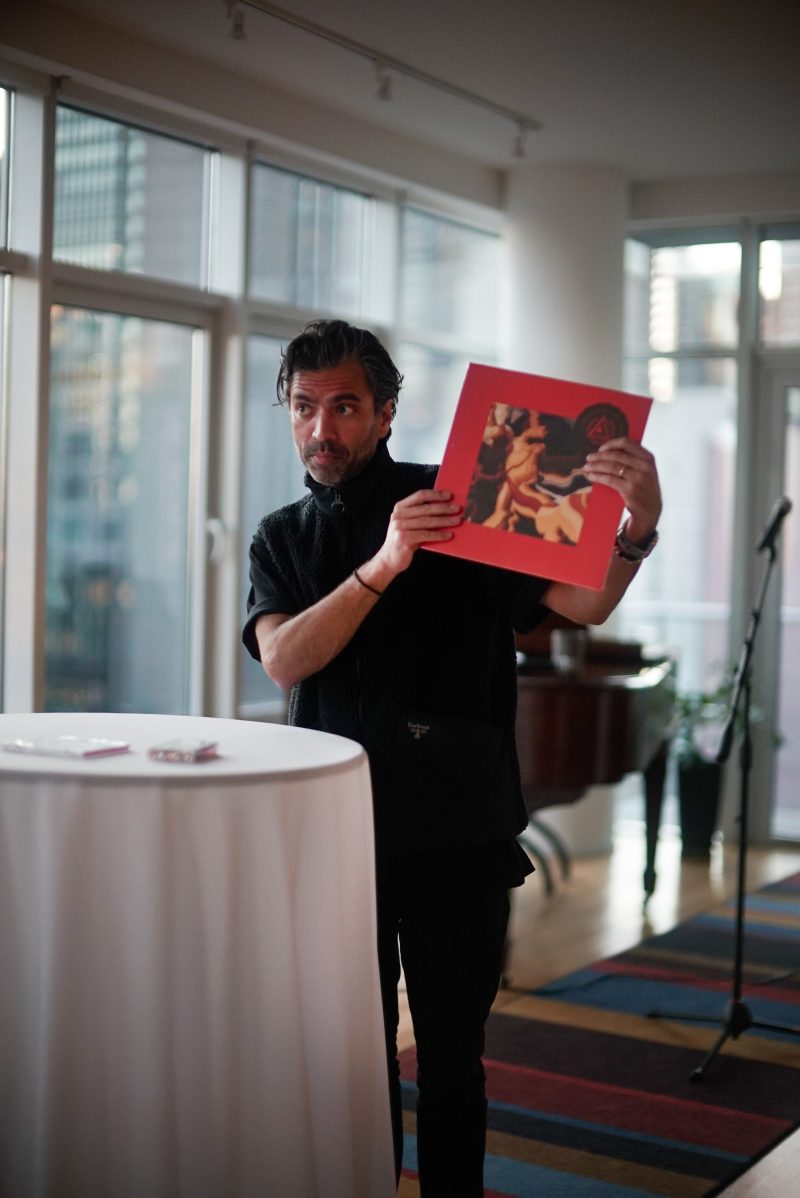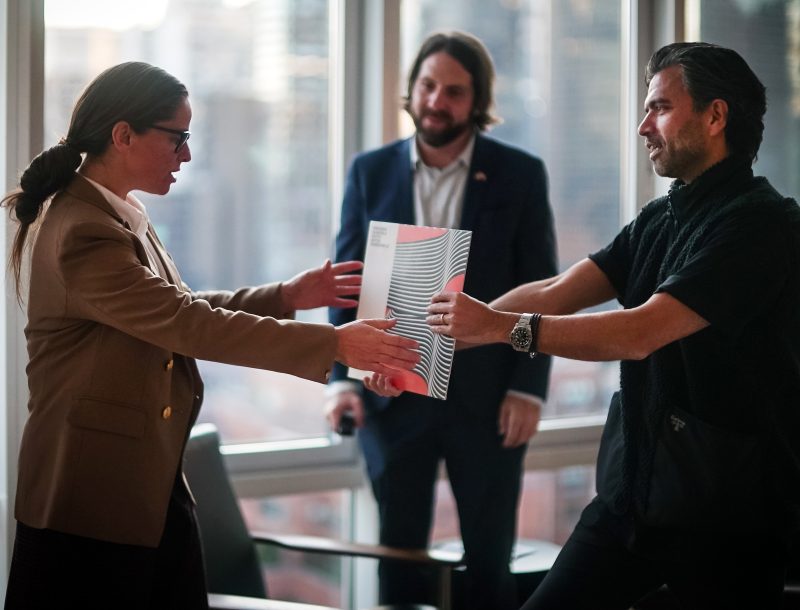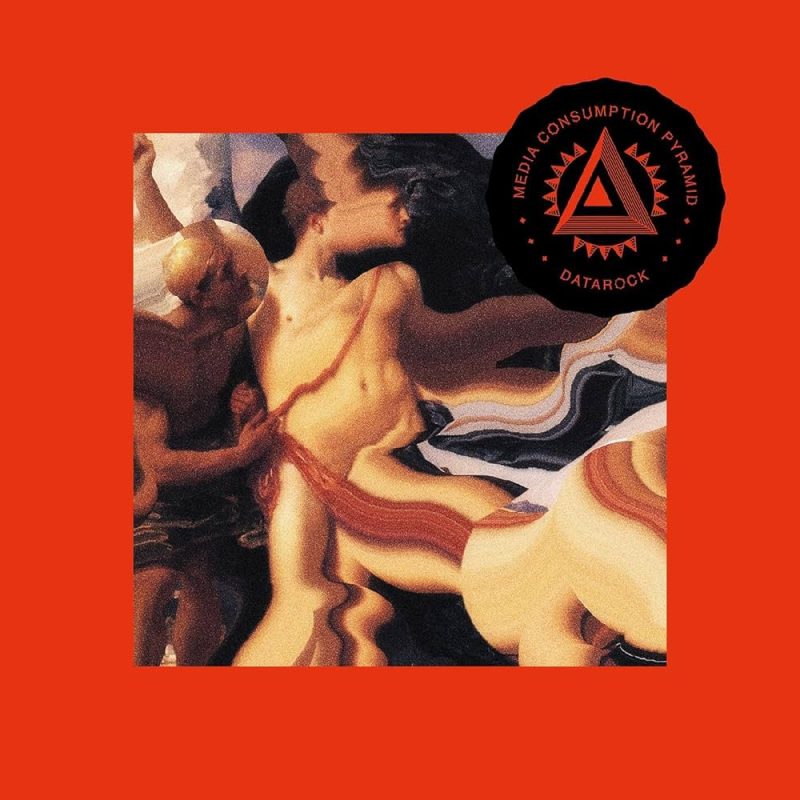Alternative
Don’t Fly Too Close To The Sun — Datarock’s Fredrik Saroea On Robots, Resurrection and Resilience
On the 22nd of July 2011, the tranquil beauty of Norway’s picturesque Utøya Island was forever shattered. A shocking act of terror, carried out by right-wing extremist Anders Behring Breivik,…
The post Don’t Fly Too Close To The Sun — Datarock’s Fredrik Saroea On Robots, Resurrection and Resilience appeared first on Post-Punk.com.
Published
5 months agoon
By
adminOn the 22nd of July 2011, the tranquil beauty of Norway’s picturesque Utøya Island was forever shattered. A shocking act of terror, carried out by right-wing extremist Anders Behring Breivik, plunged the nation into a nightmare, leaving an indelible mark on the collective consciousness. The day began with an explosion that tore through the heart of Oslo. Breivik, driven by a toxic blend of extremist ideology and hatred, had set off a bomb outside the government’s main office complex. The blast claimed the lives of eight innocent people and reduced government buildings, including the Prime Minister’s office, to rubble.
Meanwhile, Utøya Island, nestled in the calm waters of Lake Tyrifjorden, was hosting a youth camp organized by the Norwegian Labour Party—a gathering of bright-eyed teens and young adults. Breivik, disguised as a police officer, made his way onto the island, embarking upon a merciless rampage, systematically targeting the camp attendees. Sixty-nine lives were brutally cut short, and countless others injured, some with wounds that would scar them physically and emotionally for life. In the aftermath, Norway grappled with important questions about security, the rise of extremist ideologies, and the challenges of preventing and responding to acts of terrorism.
The night before, Datarock played a show at Utøya Island, and were in the middle of travel to a festival when news of the tragedy struck. Frontman Fredrik Saroea recalls a deep struggle to comprehend playing another set identical to Utøya amidst the confusion and raw grief felt by him and his fellow countrymen.
“I remember writing the setlist, tears running from my face on the sheets of paper,” he recalls. “Then came what everybody says…especially political demands. We shall never let these awful forces in society stop anything in the country! We should voice our opinions even louder! And, well, we agreed. So we went to the stage and did that show.”
For years, Saroea was haunted by the incident, acutely aware that every time Datarock performed live, there was a significant probability of at least one of the 490 Utøya survivors being present in the audience. In those moments, he experienced a complex blend of emotions, including guilt, profound empathy, and an unwavering commitment to creating beacons in the midst of darkness. He has held fast to this belief, supporting marginalized groups and starting two ethical, locally-sourced restaurants (one even earning a Michelin star).
“I’ve met survivors who are so tough and they cope with it,” he muses. “So what am I talking about? They felt the immediate shock and, you know, they’re tough…but I do know a very high percentage of the survivors have very difficult lives today. They’re also being bullied by the same political party. Which makes things important.”


Staying true to their moniker, Datarock aimed to leverage their latest LP, Media Consumption Pyramid, as a platform to engage in the intellectual discourse surrounding the influence of artificial intelligence on artistic and musical expression. Their goal was to ignite discussions about the ethical dimensions of AI’s utilization in these realms. Remarkably, as a band that emerged during the dawn of the internet, their relevance in this dialogue remains undeniably significant. Saroea’s own stance on AI teeters between fascination and fright, which is partly why Datarock chose to see its potential…and potential pitfalls.
Rabbit Hole, a song warning about the dangers of online echo chambers and conspiracy theories, employs AI-generated Alice In Wonderland-inspired imagery with The Wizard of Oz and The Matrix, to nightmarish effect. The video was created in collaboration with Aldea Centre Of Art, Contemporary Design and Technology, using the Xenomorphs of H.R. Giger as one of the prompts.
During a presentation at the Norwegian Consulate in New York City, Saroea enthusiastically elucidated the process behind the AI video for Heart Shaped Circle. He emphasized the meticulous nature of instructing AI, aiming to replicate the distinct styles of various illustrators. Their choice fell upon the late Jean Giraud, renowned as Moebius, whose drawing style proved ideal for the AI-generated morph animation. For the DISCObedience video, they opted for R. Crumb’s style. Saroea emphasized that had a traditional animator been responsible for these creations, it would have consumed a considerable amount of time and incurred exorbitant costs.
The reaction in the room was a mix of wonder and trepidation as he outlined the profound implications of this technology for artists of all disciplines. Saroea acknowledged the far-reaching impact of artificial intelligence on creative work across genres, and underscored his commitment to ensuring it didn’t diminish opportunities for human artists. Therefore, he deliberately collaborated with an AI specialist who possessed a discerning eye and critical perspective.
This year, however, man’s inhumanity to man struck again when Pride Bergen suffered threats, effectively shutting down events and striking fear within the LGBTQIA+ community. “We’ve been so happy to see all the positive change in recent years, and the growth of inclusive, all-embracing nature of celebrations such as Pride,” Saroea says. “Those kind of threats have to be taken seriously.”
Once more, Datarock seized the chance to harness the power of music and video to amplify the voice of political protest amidst oppressive circumstances. Saroea, whose sister had been an integral part of the event’s inception, enlisted the talents of drag artist Penetra Schön (Paulo Araya) for a fresh video production of Heart Shaped Circle. The original release had been an AI-generated animation extravaganza, but the event, evoking memories of Utøya, inspired another visual protest. This vibrant creation seamlessly weaved together scenes of celebration, love, and Pride in Bergen, intermingled with colorful moments that captured the essence of the cause.
“We’ve always been part of the LGBTQIA+ community in Norway!” he says. “I mean, everybody knows we’re all straight, but that’s also one of the reasons why I felt that was very important to say that as well, to make that video better. We are 100% allies, and wanted to say that no matter how many there are of you, there are more of us.”
Post-Punk.com had the opportunity to interview Saroea at the iconic Chelsea Hotel in New York City, a place steeped in artistic history and notorious tales, making it a poetic setting for their conversation about the future of artistry itself. This haven for artists has witnessed significant transformations over the past two decades (including $16 French fries on the menu).
I want to ask you about the AI experiments you’ve been doing with Media Consumption Pyramid. How do you feel AI has helped you as an artist? What are you trying to go for with it?
We made a new concert film…all seven of us who made the album are onstage. So for the preproduction and everything, we (tried to get) all seven of us together in the rehearsal space for the preproduction. It’s almost impossible to get seven almost 50-year-old guys together. One of the guys was out of the country…So we had this stand-in. I also realized we’d need a multitude of press shots. So we used AI using my own photos. I shot them, so I wouldn’t take work away from anybody. That’s important to note, because I’m on the fence about what AI can do, myself!
I am too. I’m excited about its potential, but also I know how greedy people are. I’m gonna have to adapt as a writer and a photographer. AI is going to change everything about all of us. I dunno if we necessarily need to be scared of it. I’m trying to frame it as new possibility.
Yeah, but we have to be critical.
Absolutely! Right now everybody’s doing the same thing with AI in music videos. Press a button and it’s done. It’s almost like a party trick – everybody’s excited about this new technology, but they haven’t quite figured out how or where to take it yet.
I know.
It was really similar to when the internet took off. We were young adults, remember that feeling of being like a kid in a candy shop, playing around, asking ‘what can we do with this?’
Totally!
But today, there’s some wisdom in us now where we can critically wonder what the pitfalls are.
Yeah, like what could hurt us as artists?
Yes! So I think it’s interesting that your band has kind of embraced it, but in a critical way.
I agree. When we did (the AI), we didn’t really take too much work away from creatives! In some ways, I feel like we are back in 2005 again. 2020 was the 15 year anniversary of our first album. So for the first time, they printed it on vinyl, and it was a perfect Record Store Day offering. We were going to tour the celebration of the 15 year anniversary of Fa Fa Fa and Computer Camp. And then Covid came. (During lockdown) we just remembered how it was, why everyone loved to play those songs, and why we made them, and how we were we were young. We came back to the way we were creative when we were young, not affected by any kind of business synchronization gains or whatnot, and also…there was no business to conduct! So there was no reason to try to emulate what we had done successfully before. We did just as brothers do, because who gives a fuck? We remembered how we made the first album…We made it ourselves for our own record company. We didn’t have management then. We were totally independent then. We went against collaborations with huge booking agencies, but then Fa Fa Fa happened, and then suddenly it’s a business! But when Covid came in it sort of derailed it all, and took us all back to 2005.
So then you have more freedom creatively again.
Totally! I am super proud of the fact that I’m 47, playing with the same nice people that I’ve played with since I was a kid. Like, you don’t hate me? That’s great. We don’t hate each other! We’re still friends. We’re having a good time!…But at the same time I think our attitudes have matured us as friends. One of the things I realized personally is by doing my solo album Rona Diaries, which is obviously Corona Diaries. Someone then told me that in that Hindi, rona means tears.
Did you know that before?
I didn’t! I love it even better now. You might find out something the hard way…At some point I’d stopped releasing solo stuff and drove my solo efforts into Datarock…When I did Rona Diaries, I realized that this is me. And that’s different to what I like to do together with other people…it’s much better defining (what we want to do) solo and (what works in) collaboration. I have to be honest and say the new album is the most collaborative album that we’ve done since our debut! I really, really loved working like that. Yeah, I just wrote the lyrics and the top lines and brought the rest of them in.


I love the artwork for the album.
Yes! Thank you! It’s made by this award-winning amazing, amazing illustrator. If you look at the cover, what he really did was he took a painting from the 1800s by the British painter Frederick Leighton. The painting is not completely coincidental. It’s Icarus and Daedalus. You know the myth: Icarus and his brother wanted to escape, so he made some wings of feathers and wax: ‘I’m afraid the wings might not work. Don’t fly too close to the sun, because the wax will melt.’ I don’t think you can fly without those standards.
Regardless, what I’m thinking about AI is that it’s just like Icarus. They told us you gotta father your own failures, so we might now just be about to have two father failures. We might just have bad wings with AI. I like this, but the fact of the matter is that this painting has been modified by an illustrator- you can see how it’s digitally remodeled. He’s tampering with the creative signature of a painter. So the question is like, how much of this is within what’s legal? Because intellectual properties aren’t defended for anything public domain. I mean, you can legally tamper with it, right? Yes, but is it okay for, you know, the illustrator? Is it okay for us to steal his artistic signature to such a large degree and just tweak it?
It is crazy.
This is something that I wonder about myself, with my own work. I don’t even know the legal implications! Like, who would be my listeners, the programmers behind the software? Or is it the way the guy who prompted it to do that? So the cover itself is basically opening up those questions. Where is AI going to take us? But it’s the same with our music…We’ve emulated the signature of so many artists, you know? So, yeah, even in a song like Rabbit Hole, I emulate Happy Mondays’ Step On. Great. The guitar riff is very close to or identical to the riff musically.
That’s interesting. So what you’re doing is making a comparison visually to what you do musically.
Yeah! How is this emulation different when it’s prompted by AI? How does it apply to artistic integrity? I also think we always felt good about it. We pay tribute, we don’t take away anything from anybody. We talk about it all the time. It’s all like, this or that song, everybody says it sounds like Talking Heads – but it’s equally from Television’s Marquee Moon. When I did it, when I was thinking about both. Catcher in the Rye was the Television marker.


So when it’s an artist doing this lifting, it’s a tribute, but you’re asking if is it different when a machine attempts to do the same thing?
Yeah. When is it awful? When is it okay? I mean, I don’t think we ever took business away from The Cure! Even still, they’re our base scripts for several songs. I mean, THERE’S a conversation that nobody’s really gone down yet, though.
So you’re talking about bigger implications around AI, not just the ethics of it, but the actual nitty-gritty of how it works for us, and how we can make it work for us. You’re right. I don’t know if people have really been thinking about this on a large scale. It is a very interesting point.
Yeah, Look at artists like David Bowie, you remember his voice when he was singing Starman? (His voice style) changed a lot in the Eighties. You know why?
To croon more like Elvis?
Well, perhaps. But there’s another story, too. You know the French chanson singer Jacques Brel? He heard The Walker Brothers. Scott Walker was singing Jacques Brel songs. Bowie heard Scott Walker’s English interpretations, and realized how beautiful Scott Walker’s baritone is. So then Bowie stole it. But everybody knows he did it because he said outright, “I took it from him.” But just the part of singing. There’s a million stories like that.
Bowie’s whole trajectory as an artist was like a collage, just like pulling in from different artistic influences and music influences.
Yeah, it’s almost like he was like the human version of an AI generator. Even when he came to New York City, he contacted Klaus Nomi and Joey Arias to be on Saturday Night Live. People thought that they were going to be his new band because he brought in those guys. But then he stole their shtick. Then Klaus took the suit.
Well, to be fair, that suit idea was already stolen! (The original was created by Sonia Delaunay and worn by 1920s Dadaist artist Tristan Tzara). They all stole from Dadaists and The Bauhaus! But also, Bowie borrowed from the underground drag scene here.
Yeah, yeah, yeah! So this is how this is supposed to work! Artists feed each other ideas! I read David Byrne’s How Music Works. I can see the whole particularly. He picked this, like, even the big suit, a particular kind of Japanese stage costume. He’s very, he is very aware of it. But of course you don’t know (the source). But also, if you watch his interviews, you see that he’s very open about this and knows the guys that he took inspiration from and he got tips from them.
But a lot (about AI) is good and bad. For instance, let’s say someone needs a quick illustration for the high seas and sneezing, whatever. You don’t need a photographer. That’s usually a shit job no one really wants to do, so they can just AI it. But at the same time, I’ll get a lot of people telling me they have a super interesting creative life because of doing assignments like that. I don’t know if it’s a terrible thing that the same amazing creative doesn’t spend time doing dumb shit.
A lot of that stuff is like IS thankless, soulless work. I’d rather express myself doing portraits, having some kind of synergy. When I’m shooting stock photos, It’s not fun. It’s draining. It’s not as easy to open up your brain for other things.
Yeah. Yeah, exactly. And like, for instance, in my case, I don’t think I think it would have been, you know, very good for my brain if I were doing commercial assignments in addition to the creative stuff that I really appreciate. Maybe I’d rather work with special needs kids and spend my time doing something very positive, instead of illustrating the high seas and sneezing.


Have your restaurants been something that you did to give yourself some break from constant creativity?
I think it was. I was so used to constantly stressing out. Traveling and being busy. And I realized that I had two daughters and a wife, and I couldn’t just change into doing something normal. Yeah. So I started this restaurant because it’s very similar to putting on a show every night.
Are you involved in the restaurants yourself?
I sold my 50% of the one that now has a Michelin star. Yeah, but my punk chef friend actually owns the restaurant with quality! It’s called The Gulfstream. I sold it to my friend…we own a different restaurant together that’s more like a pizzeria. Oysters, pizzas and natural wines. But also, I just got a new assignment because I decided I really loved living like this. It’s one of the biggest indoor venues in Bergen, but they also serve food and beverages. I care a lot about serving local food but also you know, biodynamic.
I think that’s a really meaningful way to give back to the community, employing people, helping others out.
The restaurants are also locally sourced. It’s seafood-based; the few times we have any meat, it’s wild game, mega sustainable and the animal’s going to have a good life. It’s not industrial and so far it’s a very ethical restaurant. I started working in a vegan restaurant in 1996. I knew going in that an aware approach to food is important. And there’s such a strong link between like the alternative music scene and food service.
Yes, it’s very much the same kind of energy and the same people.
Literally the same people! All my friends are musicians AND work in the food industry. And I love it. I know a lot of chefs in the music industry. They’re similar enough to work together like this.
Bow down to your robot overlords by streaming Media Consumption Pyramid below:
Follow Datarock:


The post Don’t Fly Too Close To The Sun — Datarock’s Fredrik Saroea On Robots, Resurrection and Resilience appeared first on Post-Punk.com.

